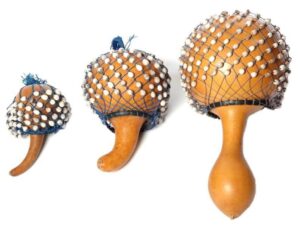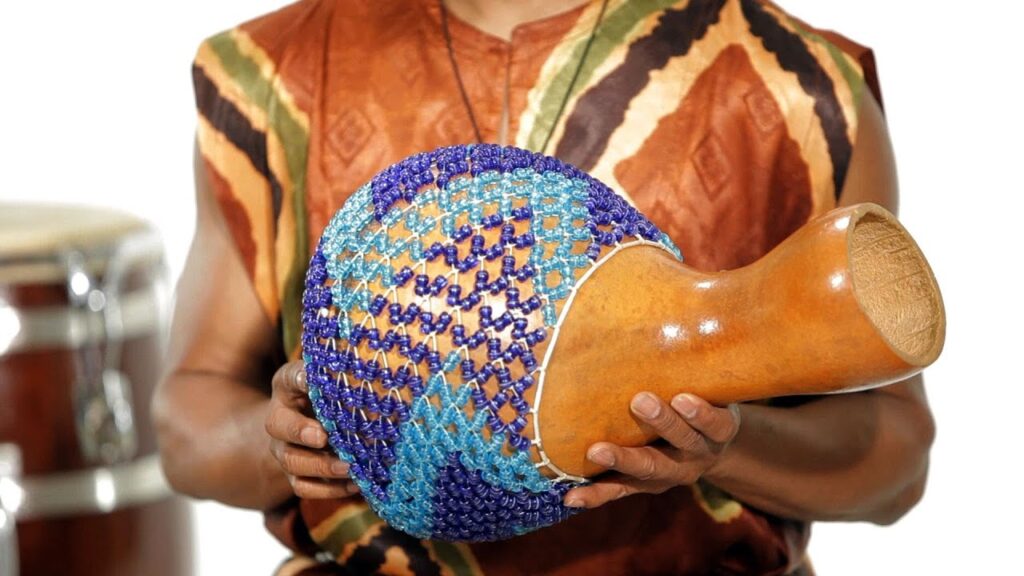The Shekere is more than just a musical instrument—it’s a storyteller, a vibe, a cultural icon that has been shaking its way through generations of Nigerian tradition. Whether you’ve heard it at a Yoruba wedding or during an Igbo dance performance, its crisp, joyful rattle is unforgettable.
What Exactly Is the Shekere?

The Shekere (pronounced sheh-keh-reh) is one of Nigeria’s most iconic traditional percussion instruments. It’s made from a dried gourd—yes, an actual gourd—that’s been hollowed out and covered in a net of beads, seeds, or shells. When shaken, the beads hit the gourd, producing that signature rattling sound. Simple, yet magical.
While variations of the Shekere exist across West Africa, Nigeria’s version has its own flair. Among the Yoruba people, it’s sometimes called Sekere, while the Igbo call theirs Ichaka. Different tribes, same vibrant energy.
More Than Just a Rattle
Don’t let its playful appearance fool you. The Shekere is a serious instrument used in all kinds of settings—cultural ceremonies, religious rites, dance performances, and even contemporary music. It’s the kind of instrument that can command attention or beautifully complement drums and vocals.
In traditional Yoruba music, the Shekere is often played alongside the talking drum and bata drums, adding a percussive sparkle to the ensemble. It can be shaken, slapped, twisted, or tossed gently to produce a range of rhythms. Yes, there’s technique involved—it’s not just random shaking.
Cultural Significance

Beyond its musical function, this traditional instrument holds spiritual and social meaning. In some traditional settings, it’s used in rituals and festivals to call on spirits, ancestors, or deities. It’s also a celebratory instrument—used during weddings, naming ceremonies, and other happy gatherings.
And let’s be real! no Nigerian traditional dance troupe is complete without someone vibing with a Shekere in hand, hips swaying, beads flying, crowd cheering.
The Shekere Today
Just like the talking drum, the Shekere has evolved. Today, you’ll find artists and musicians infusing it into Afrobeat, highlife, gospel, and even hip-hop. It’s also become a favorite in schools and cultural centers for teaching rhythm and movement.
And guess what? Modern Shekeres now come in plastic, rubber, and even acrylic forms—talk about a glow-up. But for many, nothing beats the rustic sound of an old-school, handmade gourd Shekere.
Final Beat
The Shekere is proof that music doesn’t always need chords or lyrics to move you. Sometimes, all it takes is a simple gourd, some beads, and a good pair of hands to make magic. It’s more than just an instrument—it’s a rhythmic expression of joy, tradition, and community.
So next time you hear that cheerful shake in the background of a Nigerian tune, give it a nod. That’s the Shekere, and it’s been keeping the culture lit for centuries.

